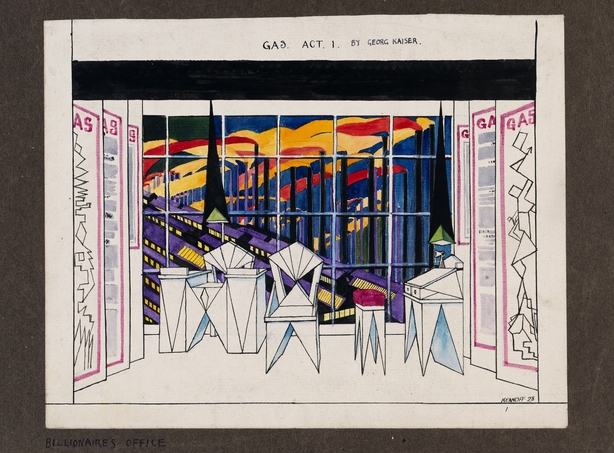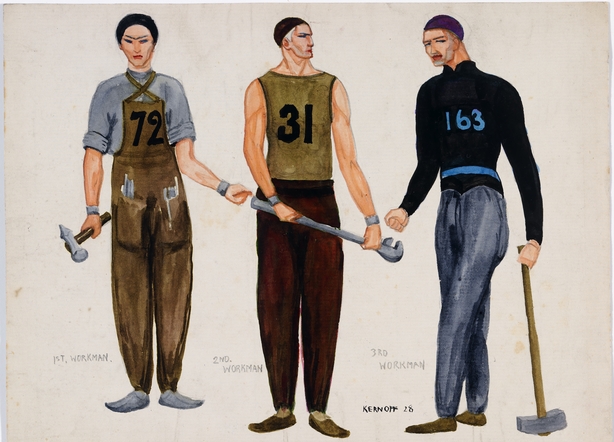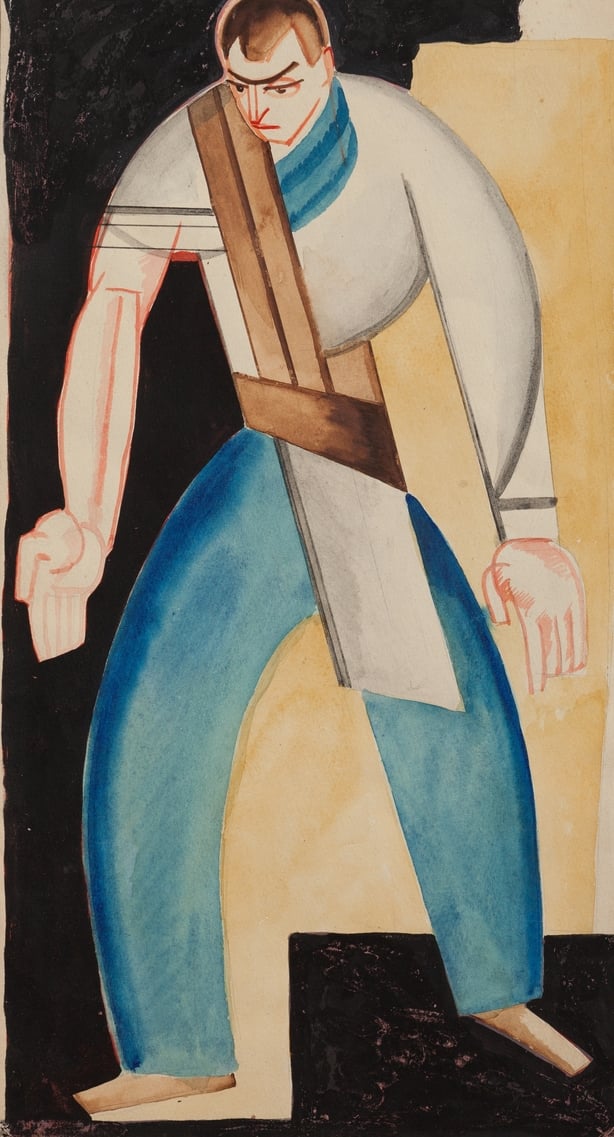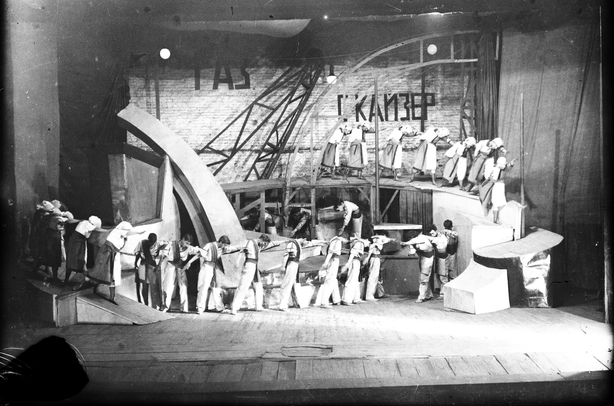In recent times, all of our national institutions have been engaged in looking back with the Decade of Centenaries. Now a new exhibition at IMMA, the Irish Museum of Modern Art, shows how we, the Irish were not alone in fighting for and gaining independence from a Colonial Power.
Self Determination A Global Perspective has brought artworks together from galleries all over Europe to show how various nations, having broken free of colonial rule, went about creating a new state and a cultural aesthetic to go with that new-found independence.
Below, Dr Nathan O'Donnell focuses on the establishment of national theatres in these new nations.
Performing Nationhood
The first turbulent years after the First World War saw a radical political realignment of much of Europe and the Mediterranean. This was the moment of 'self-determination', a transformative shift that led to the establishment of many new nation-states. It is the subject of Self-Determination: A Global Perspective at IMMA, focussing on the role of art and artists across the new states during this period of cultural reinvention, spanning the fields of architecture, design, visual art, literature, and theatre.
We need your consent to load this rte-player contentWe use rte-player to manage extra content that can set cookies on your device and collect data about your activity. Please review their details and accept them to load the content.Manage Preferences
Listen: Inside Self-Determination: A Global Perspective on RTÉ Arena
It was arguably within theatre that the sense of national transformation was most powerfully and publicly expressed. In Ireland, the Abbey Theatre was deeply implicated in the cause of Irish independence, through its plays but also through the overlapping political commitments of many of those connected to the theatre. Historian Fearghal McGarry has written extensively on these overlaps in revolutionary Dublin, focusing not on the familiar narratives but on lesser-known figures such as Nellie Bushell, an usher at the Abbey who stored ammunition in the box office.

Gas: Three Workers (1928–1930), Graphite, ink, and watercolour on paper
National Gallery of Ireland, presented by Miss Lina Kernoff, 1975
© The Artist's Estate, image courtesy of the National Gallery of Ireland
Theatre has a long, enduring connection to democratic politics. At its most fundamental, theatre is a space where narratives of statehood and national identity can be rehearsed, performed, and contested. In the revolutionary period, and in the early years of the new states, this became a particularly charged process, reflected across the spectrum of theatrical practice, including national theatres, amateur theatrical societies, avant-garde theatre associations, and radical workers’ collectives.

Gas: Three Workers (1928–1930), Graphite, ink, and watercolour on paper
National Gallery of Ireland, presented by Miss Lina Kernoff, 1975
© The Artist's Estate, image courtesy of the National Gallery of Ireland
Texts and ideas also flowed across the new nation states. The Riga Workers’ Theatre in Latvia (1926–1934), for instance, mounted several important productions of the work of George Bernard Shaw, including the very last of their productions, Catherine the Great, in April 1934, directed by Kārlis Veics with a classically regal set design by Herberts Līkums. Shaw’s play takes a historic subject to reflect upon present-day tyranny and the rise in public support for authoritarian rule. Less than a month after the Workers’ Theatre premiere, a coup d'état took place in Latvia. The Workers' Theatre closed permanently as a result.

of Gas: Worker (1923)
Image courtesy of the Museum of Theatre, Music, and Cinema of Ukraine
In Ukraine, theatre was closely entwined with the national cause. In 1917, the first meeting of the National Theatre Committee took place shortly after the formation of the Ukrainian People's Republic, an important prerequisite for the institutionalisation of the state. Curator Tetiana Rudenko has noted an interesting parallel between official and unofficial theatrical developments at this moment, observing that, at the same time, director Les Kurbas created the Ukrainian Young Theatre, seeking 'to update the repertoire with a European vector and, at the same time, to introduce avant-garde ideology into national development'. For Rudenko, who is Chief Collection Keeper in the Museum of Theatre, Music, and Cinema of Ukraine (one of the key lenders to the exhibition at IMMA), Kurbas's theatre sought to ‘embody, visualise, and model the new Ukrainian community’.

Archival photograph, image courtesy of the
Museum of Theatre, Music, and Cinema of Ukraine
In 1922, Kurbas went on to found the Berezil Group, an experimental theatre company whose work was grounded in avant-garde principles of gesture and rhythm. Like the Riga Workers' Theatre and later the Gate Theatre in Dublin, Berezil staged a production of the German Expressionist play Gas by Georg Kaiser in 1923. Centred on an explosion at a gas plant, Gas is a play about industrial disaster, resource dependency, and social reconstruction, themes that resonated deeply in the new nation states of the 1920s. In the photographs of the Berezil production, a group of actors can be seen moving in unison, following the curving platforms of an overarching Constructivist set. They have been choreographed in the mass to give the effect of a large social machine in motion, their monochrome costumes contributing to the impression of unity and unanimity. This was a groundbreaking production that is said to have ushered in a 'new era’ of Ukrainian theatre.
For theatre scholar Zoltan Imre, theatre is a place where collective memory can be contained, performed, reiterated and consolidated, ‘where collective identities can be tested, formed and manifested; and where the various images and memories of the past can be transformed into the present and even projected to anticipate the future’. In our current moment of multiplying geopolitical crises, such transformations of the past are ever more urgent, revisiting, reframing, and reimagining received histories of nationhood and self-determination, across borders.
Dr Nathan O’Donnell is Curatorial Associate and lead researcher on the exhibition, Self-Determination: A Global Perspective, at IMMA.
Self-Determination: A Global Perspective is on show at IMMA from 30 Nov 2023 – 21 April 2024 - find out more here.
